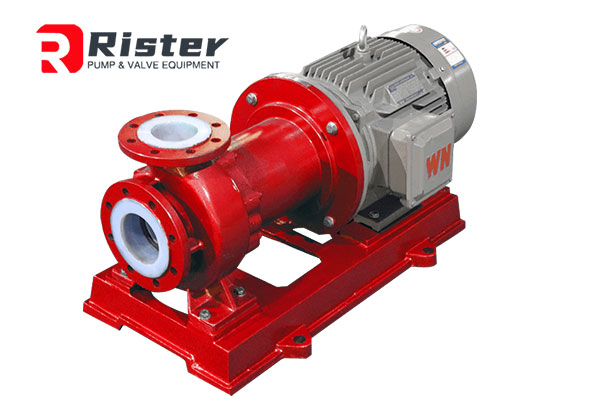Analysis of Chemical pump for Industrial waste Gas treatment.

Chemical pollution refers to the waste gas and pollutants produced in the production process of the chemical industry. most of these wastes are harmful above a certain concentration, and some are highly toxic, which will cause pollution when they enter the environment. Do you know what chemical waste gas is? Chemical waste gas comes from poisonous and harmful gases emitted by chemical plants in chemical production. The composition of chemical waste gas produced by different chemical production industries varies greatly, with many kinds of pollutants, complex physical and chemical properties, and different toxicity, which seriously pollute the environment and affect human health. Which chemical pumps are commonly used in industrial chemical waste gas treatment?
A.There are generally three major categories of chemical waste gases:
1.nitrogen-containing compounds, such as ammonia, amines, nitriles, nitro compounds and nitrogen-containing heterocyclic compounds.
2.compounds consisting of carbon, hydrogen or carbon, hydrogen and oxygen (lower alcohols, aldehydes, fatty acids, etc.).
3.sulfur-containing compounds, such as hydrogen sulfide, mercaptan, dimethyl sulfur, sulfide and sulfur-containing heterocyclic compounds. The eight malodorous substances that mainly affect the human body are hydrogen sulfide, ammonia, trimethylamine, methyl mercaptan, methyl sulfide, carbon disulfide, styrene and dimethyl disulfide. The malodorous gas that we usually refer to refers to the diffusion of malodorous gas in the air.
B.What are the characteristics of chemical waste gas?
1.most of the emissions are irritating or corrosive. Such as sulfur dioxide, nitrogen oxides, chlorine, hydrogen fluoride and other gases are irritating or corrosive, especially as large as sulfur dioxide emissions, sulfur dioxide gas is directly harmful to human health, corrosion of metals and so on.
2.there are many kinds of planktonic particles in waste gas and the harm is great. The planktonic particles discharged from chemical production include dust, flue gas, acid fog and so on, which do great harm to the environment.
3.there are more flammable and explosive gases. Such as ketones, aldehydes and unsaturated hydrocarbons with low boiling point, a large number of flammable and explosive gases will easily cause fire and explosion accidents and do great harm if proper measures are not taken.
C.What are the chemical waste gas treatment processes and which chemical pumps are used to transport liquids through the treatment system?
1.treatment process.
a.considering the operating cost and safety, the process route of this scheme is proposed to adopt ventilation system (fan, collection cover, pipeline) + pretreatment system (water spray tower + alkali washing tower) + core purification system (uv photolysis purification equipment) to treat chemical waste gas.
b.Chemical waste gas treatment process.
The chemical waste gas enters the pretreatment system (water washing tower-commonly used chemical pump: IHF fluorine lined centrifugal pump, FSB fluoroplastic centrifugal pump, etc.), fully absorbs the water-soluble waste gas from the waste gas through water washing, and then enters the next process.
2.chemical waste gas into the pretreatment system (alkali washing tower-commonly used chemical pump: IH stainless steel wear-resistant alkali pump, CQB lined fluorine magnetic pump, etc.), remove sulfur compound waste gas, and then move on to the next process.
3.waste gas into the core purification system (uv photolysis purification equipment-commonly used chemical pump: UHB corrosion-resistant abrasive slurry pump, etc.). The purification equipment decomposes the odor of the sludge, decomposes the oxygen and produces ozone, which reacts with the pyrolysis products of organic molecules, which is generally transformed into carbon dioxide, water and other substances, and then discharged at high altitude through the pipeline.